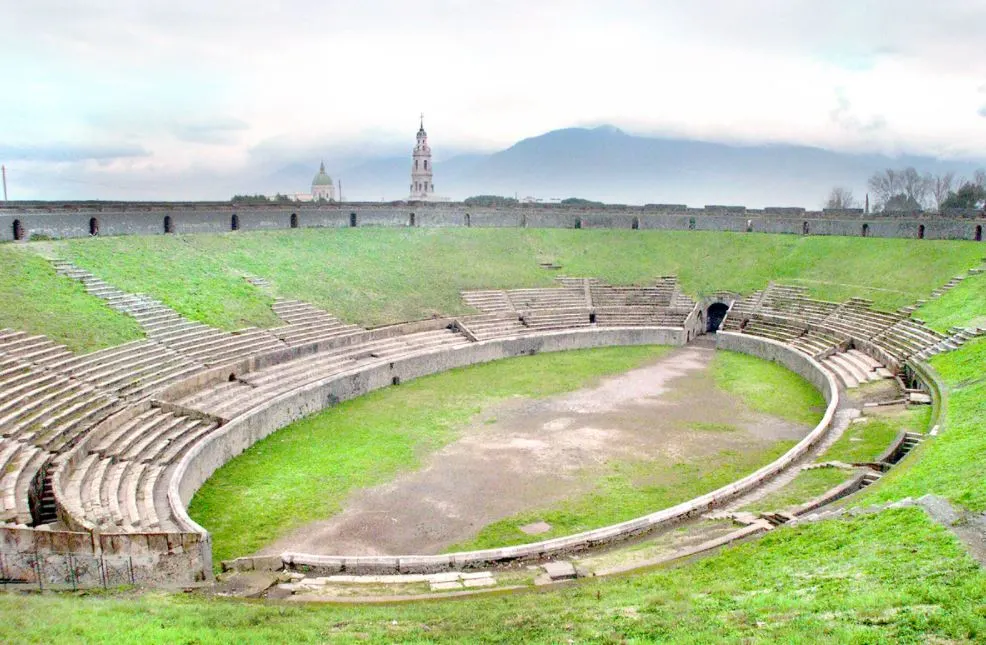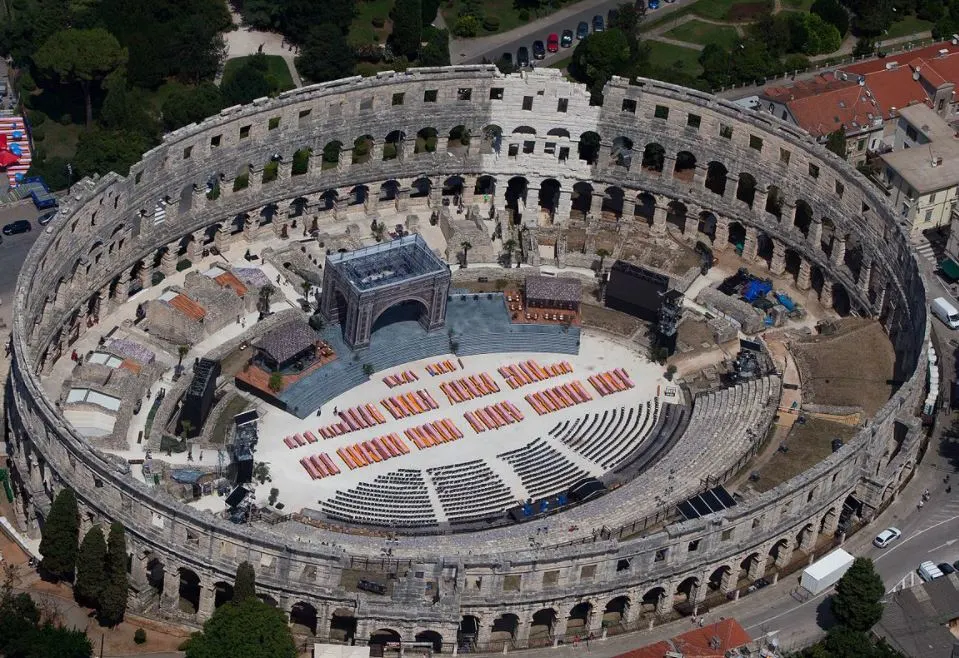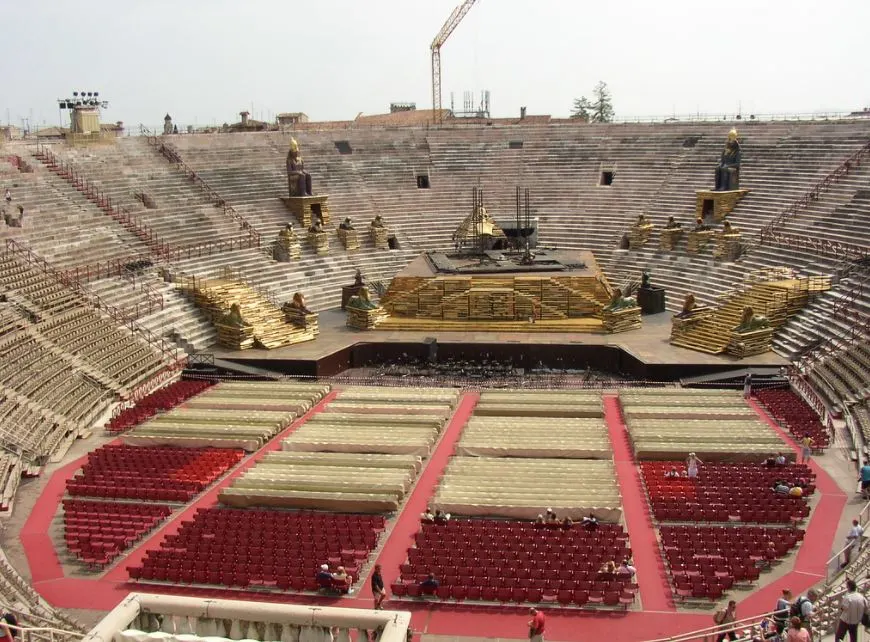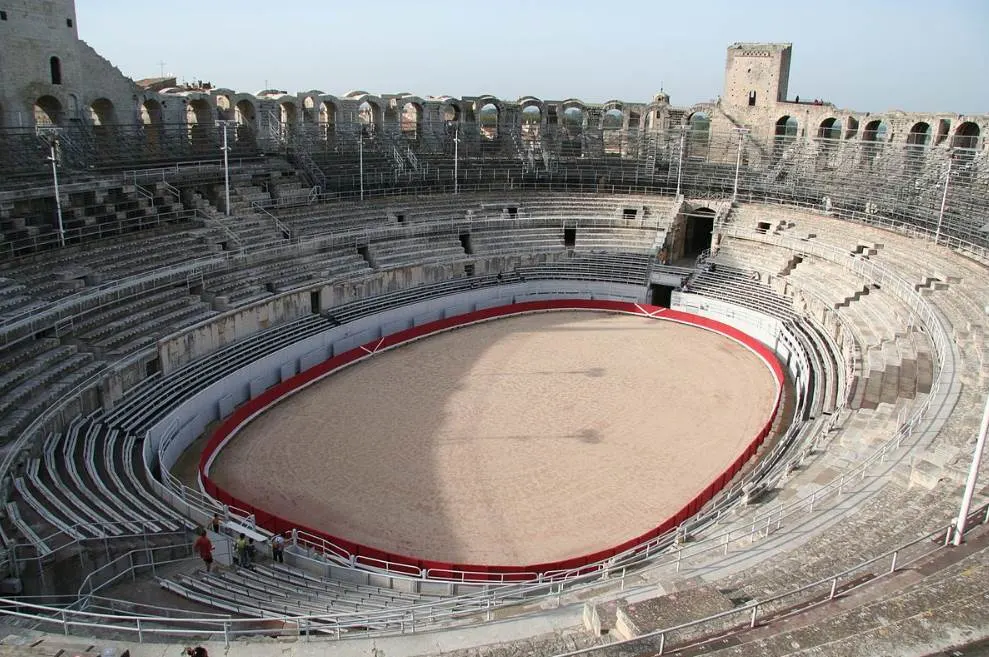Just like any other civilization that ever emerged in this world, the Romans loved various forms of entertainment. These weren’t exactly the football games or tennis matches we enjoy watching today as these don’t feature live executions of condemned people during lunch breaks.
The most popular forms of entertainment in Roman times were gladiatorial fights and chariot races. The latter required immense stadiums such as the Circus Maximus in Rome, while fights could be held in relatively small stadiums as well.
In this article, we’ll take a closer look at where the most popular Roman blood sports took place in some of the best-preserved Roman Amphitheaters in the world!
1. Colosseum, Rome, Italy
The Colosseum in Rome is one of those structures that appears in all top lists of places to visit in Rome, mainly because of its infamous history. It was built in the 70s and 80s A.D. using the spoils of Jerusalem, which included thousands of Jewish slaves, following the sacking of the Judean capital.
It’s the largest amphitheater that has ever been built and remarkably still holds this record today, nearly 2 millennia after it was completed. It’s estimated that anywhere between 50,000 and 80,000 people could fit in this arena, even though they were crammed together like sardines in a can. Today, both the arena itself and the underground passageways beneath the arena floor can be visited.
Official website: Colosseum in Rome

2. Amphitheater of El Jem, Tunisia
The Amphitheater of El Jem was built in the ancient Carthaginian city of Thysdrus in the Roman province of Africa. It was completed in the 3rd century A.D. around the year 238 A.D. This UNESCO World Heritage site is located in the modern-day city of El Djem in Tunisia in the eastern part of the country.
Just like the amphitheater in Rome, this was an immense arena that could hold approximately 35,000 spectators in ancient times. Even though the structure suffered a lot of damage over the centuries, some parts have been remarkably well-preserved and give us a clear glimpse into the life of the people who entertained the mob in an often bloody manner.
El Jem on UNESCO: Amphitheatre of El Jem

3. Amphitheatre of Pompeii, Italy

The Amphitheatre of Pompeii is a remarkable structure for multiple reasons. First of all, it was completed around 70 B.C. during the final phase of the Roman Republic. It was the first-ever amphitheater to be built of stone, replacing the wooden structures that pre-dated it. To give some reference to this remarkable structure, the next larger stone amphitheater to be built was the Colosseum, a century later.
Just over a century later in 79 A.D., the amphitheater was completely buried by the eruption of Mount Vesuvius nearby. This means that the arena has been remarkably well preserved. It’s still used today as well for concerts and other events, even though the first live performance since its destruction in 79 A.D. only happened in the year 2016.

4. Pula Arena, Croatia
The Pula Arena is located in the Croatian city of Pula, the 8th-largest city in the country. This is also the largest city in Istria County in the western part of Croatia and featured multiple ancient Roman buildings. The amphitheater is by far the most impressive ancient monument in the city and is considered to be one of the best-preserved Roman amphitheaters in the world as well.
It was built between 27 B.C. and 68 A.D. and is the 6th-largest surviving Roman arena. It’s also the only arena in which the 4 external towers have been preserved, making it one of the most fascinating ancient Roman landmarks in the world. Today, the arena is a popular spot for concerts and some of the world’s most famous artists and bands have performed. It’s also a popular tourist attraction and is open to the public every day.
Official website: Pula Amphitheater Info

5. Arena of Nîmes, France
The Arena of Nîmes is another extremely well-preserved Roman Amphitheater and is located in the southern French city with the same name. It was built around the same time as the Colosseum in the 1st century A.D. and even though it was smaller in scale, it could still hold approximately 24,000 spectators.
Just like the other 400 remaining Roman amphitheaters, the arena’s terraces were divided into separate sections. This arena featured 32 tiers and 4 sections in which the Roman people could sit based on the social class they belonged to. The separation of these terraces can still be seen today as well Apart from serving as a major tourist attraction in the city, it’s also still used today for 2 annual bullfights and concerts.
Official website: Arènes de Nîmes

6. Verona Arena, Italy
The Verona Arena is located in an Italian city with the same name. Verona is located in the Veneto region in the northeast of the country and is the largest city in this region as well. This is another arena that is situated right in the heart of the city and faces the largest square in Verona called the “Piazza Bra.”
This remarkably well-preserved arena was completed in the year 30 A.D. which means it’s another arena that pre-dates the Roman Colosseum. The arena had a total capacity of 30,000 in ancient times and is still being used for a wide variety of purposes today, including operas and concerts. Yes, some of the biggest operatic artists and pop artists have performed in this magnificent venue that was used for quite something else nearly 2,000 years ago!

7. Arles Amphitheater
The Arles Amphitheatre is the centerpiece in the relatively small town of Arles in southern France. This town is located between the two major cities of Montpellier and Marseille and was once one of the most important cities in the Western part of the Roman Empire. The stone amphitheater was completed in the year 90 A.D, just a decade after the completion of the Colosseum.
The arena could seat 20,000 spectators and was being used for many centuries, right upon the fall of the Western Roman Empire in the 5th century. After this event, it was transformed into a fortification and also served as a residential neighborhood until the early 19th century. Today, it’s still used for the annual bullfight and concerts.

